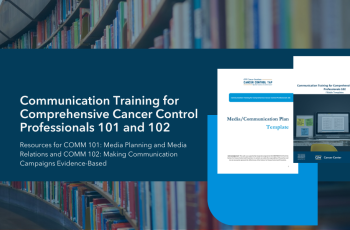This work was supported by Cooperative Agreement #NU58DP007539-01 from the Centers for Disease Control and Prevention (CDC).
PSE Step 5 Promote
To help reduce the incidence and mortality rates of melanoma in Rhode Island, partners designed an initiative to increase sun safety elements at outdoor recreation areas and to improve policies protecting employees and patrons.
In order to increase the proportion of children in the state who were fully vaccinated against human papillomavirus (HPV), the Michigan Cancer Consortium developed an education campaign to promote vaccine uptake among the state’s Latino population.
Louisiana had high smoking rates, as well as a high percentage of employees working in non-smoke-free workplaces. In response, Louisiana partners promoted a comprehensive smoke-free ordinance that would ban smoking inside worksites and public places including bars, casinos and restaurants.
Efforts of the Georgia Cancer Control Consortium, along with numerous partners, resulted in the enactment of legislation that established a statewide Palliative Care and Quality of Life Advisory Council.
The Media Campaign Resource Center (MCRC) provides tobacco-control organizations with tools for finding, learning about, and ordering CDC-licensed tobacco counter-advertisements.
This one-stop shop for health communicators provides tools and templates to develop health communication and social marketing campaigns and programs focusing on audience, campaigns, channels, health literacy, research, evaluation and risk communication.
The purpose of this guide is to provide coalitions with information and tools they can use to organize their media efforts and maximize their success.
This resource, from the American Cancer Society and the National Comprehensive Cancer Control Program, may be used by coalitions and policy committees or task force groups to achieve their healthy community goals.
Resources to accompany Communication Training for Comprehensive Cancer Control Professionals 101 and 102




